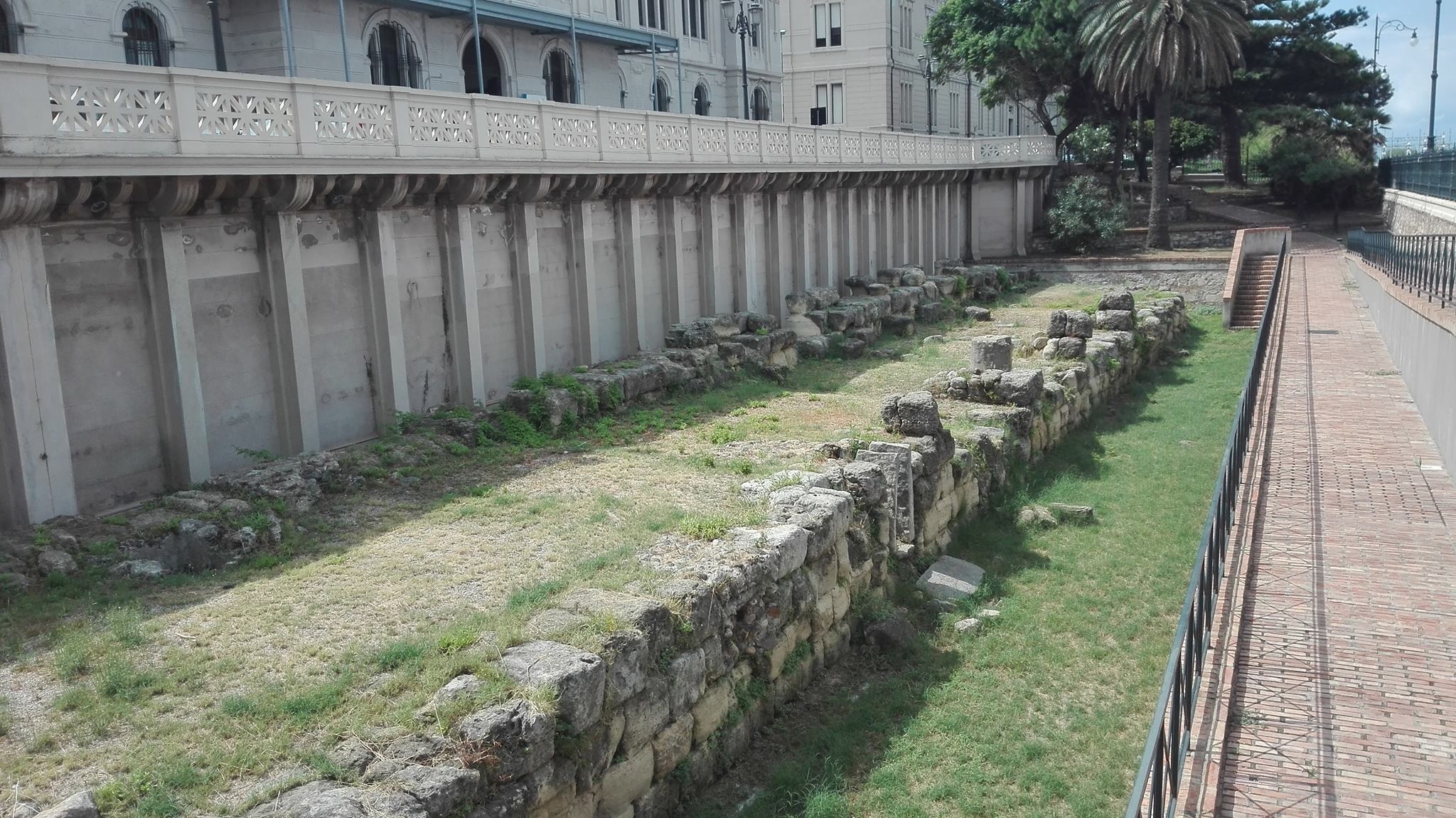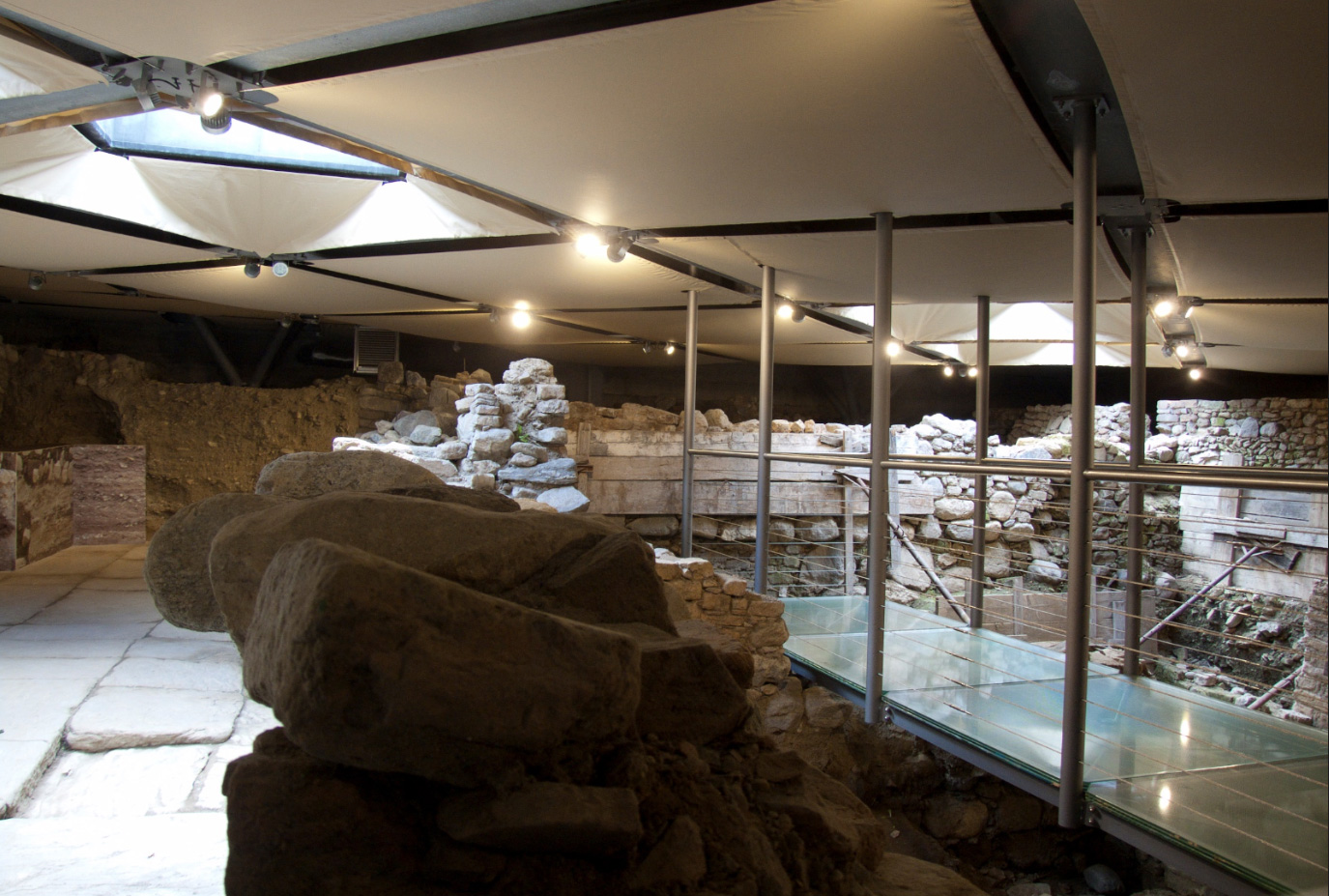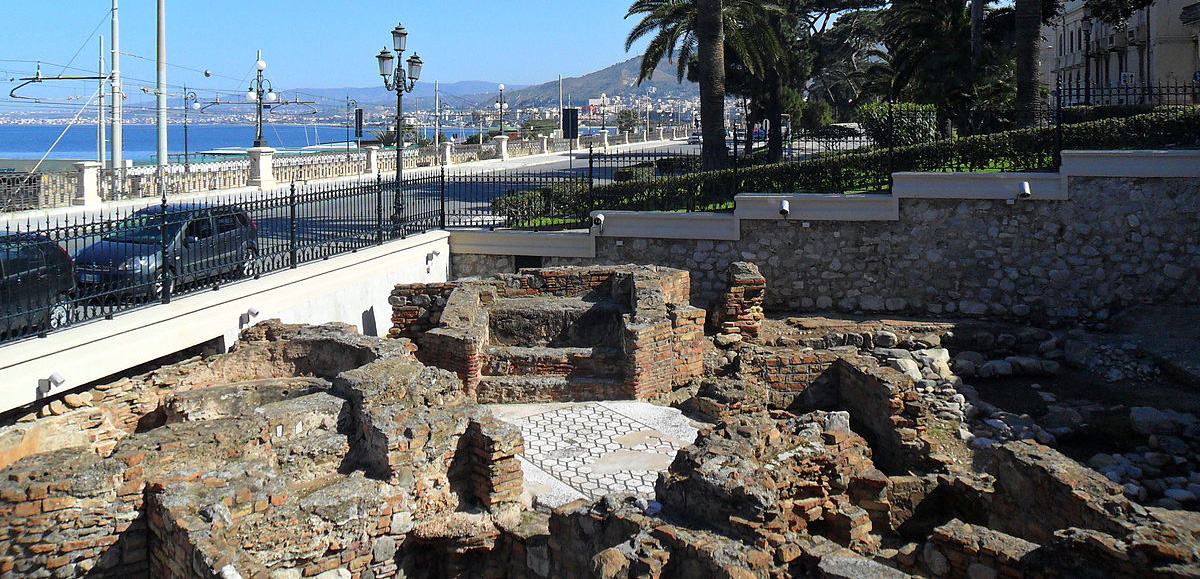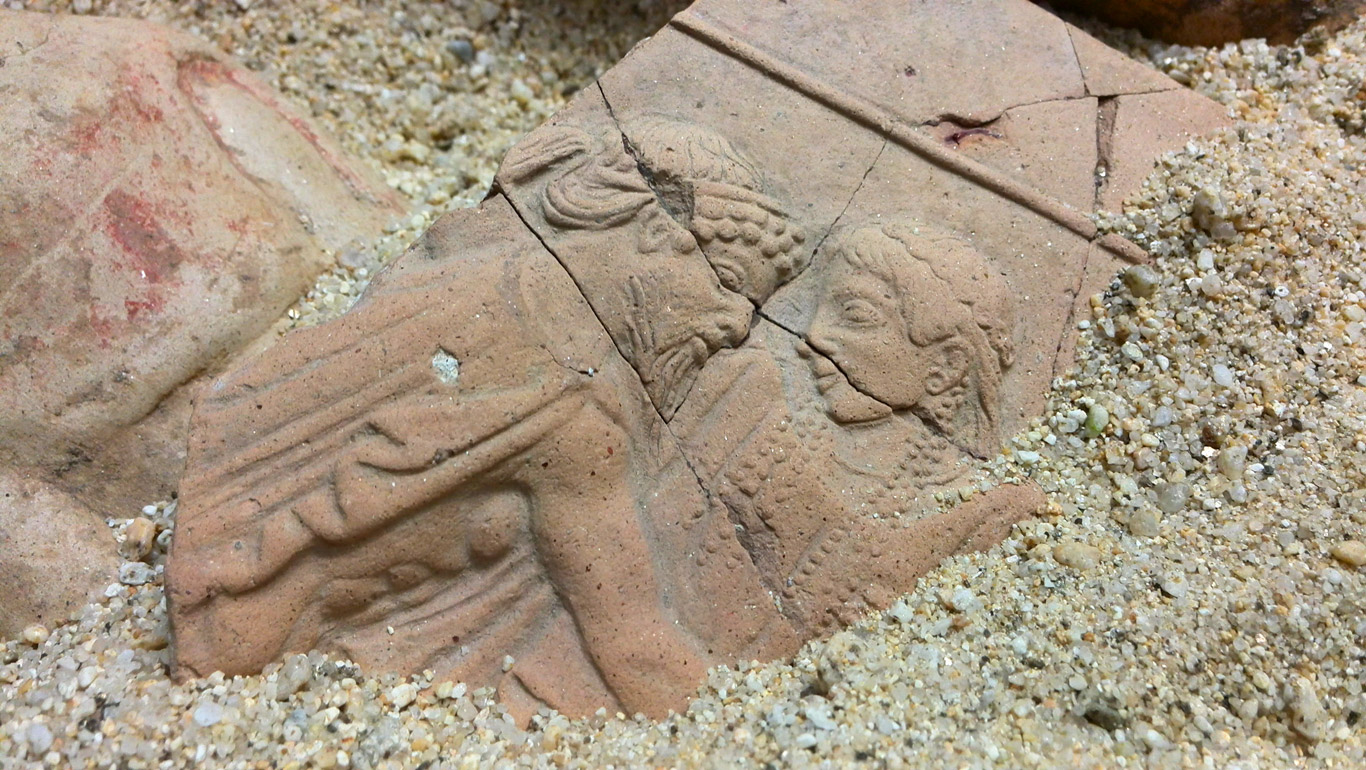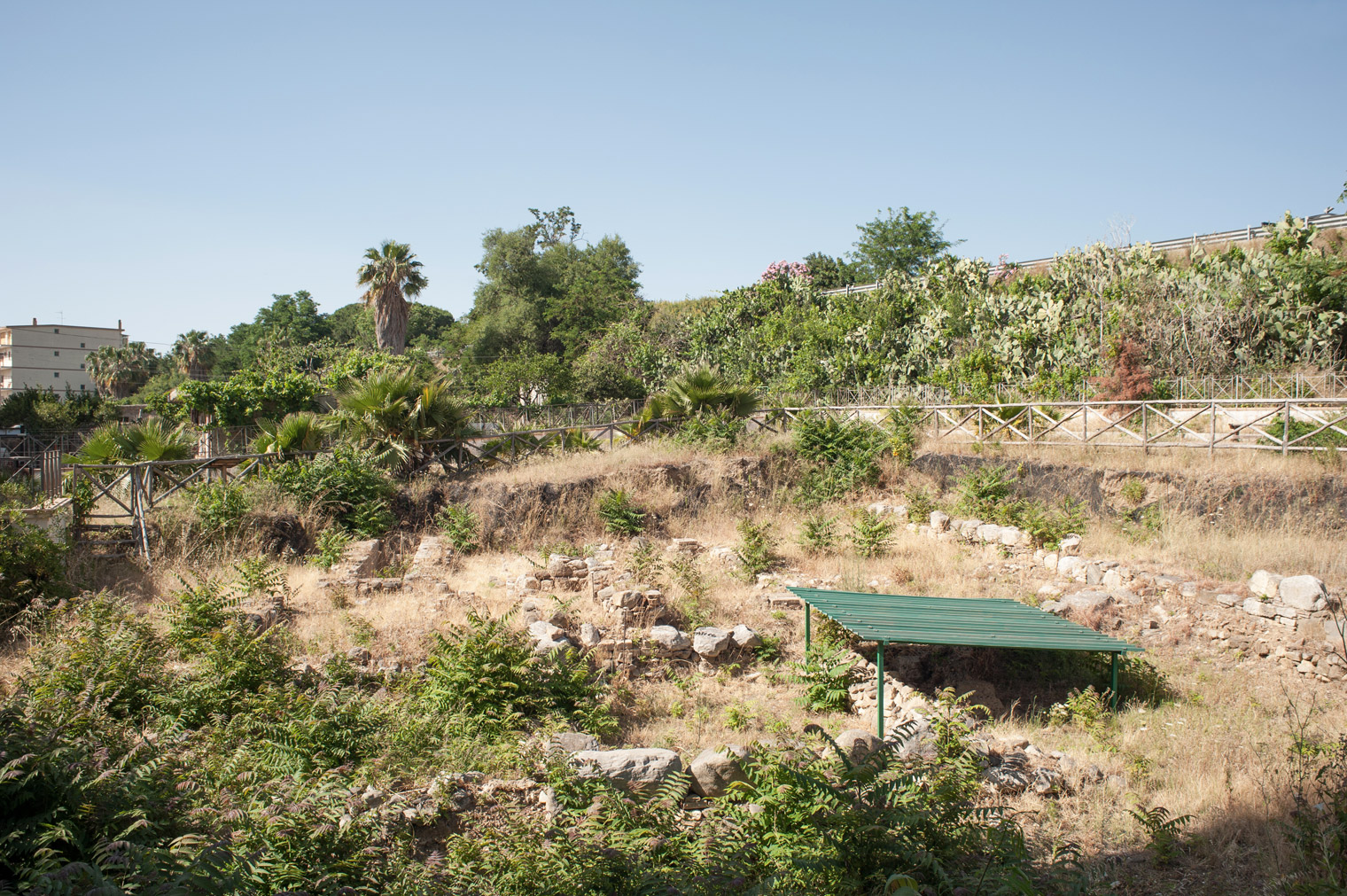Walking along the Falcomatà waterfront, at Piazza Camagna, you will come across Reggio’s largest stretch of Hellenistic walls, enclosed by wrought-iron gate. Although they are defined as “Greek” walls, they are in reality the product of the city wall circuit that over time has been restored countless times, especially after the violent earthquake of 1783.
The original structure
Built from burned bricks, of which almost no traces remain, the walls were built on foundations of local soft stone. The walls were constructed using a double curtain technique; spaces were filled with earth and crushed stone. The walls were actually built using isodomic blocks of local sandstone, arranged in two parallel lines with perpendicular stretches.
DID YOU KNOW THAT …?
The preserved section is of extraordinary interest because it features the point where the western walls converge in an angle, deviating towards the east, closing the city walls to the south.
The various hypotheses regarding its construction date
In terms of identifying the wall’s age, the ancient ceramic fragments found in the bricks are not helpful when trying to establish its exact moment of construction. The hypothesis that the walls were built after the mid-4th century BC, when Dionysius II rebuilt the city of Reggio under the name Febea, the city of Febo Apollo, is the most probable.
The Archaeological Superintendence has hypothesized that, in the Reggio wall circuit, the walls in raw bricks come from the period of Anassila the tyrant (5th century BC), while those in burned bricks can be attributed to the tyrant Dionysius II, who was only in Reggio between 356 and 351 BC. Other scholars think instead that the walls, as we know them today, come from 4th century BC, based on the witnessed interventions by Dionysius II, the Republic of Reggina, and King Agathocles.
Beyond the question of its exact dating, the Greek walls represent an important historical record not only of the city, but also of the entire classical civilization along the shores of the Mediterranean.
Due to the Covid-19 emergency, all visits are temporarily suspended.
To visit the site, please contact the association IN.SI.DE
Tel. 3661019145
Group visits are possible by booking at the contacts indicated.
